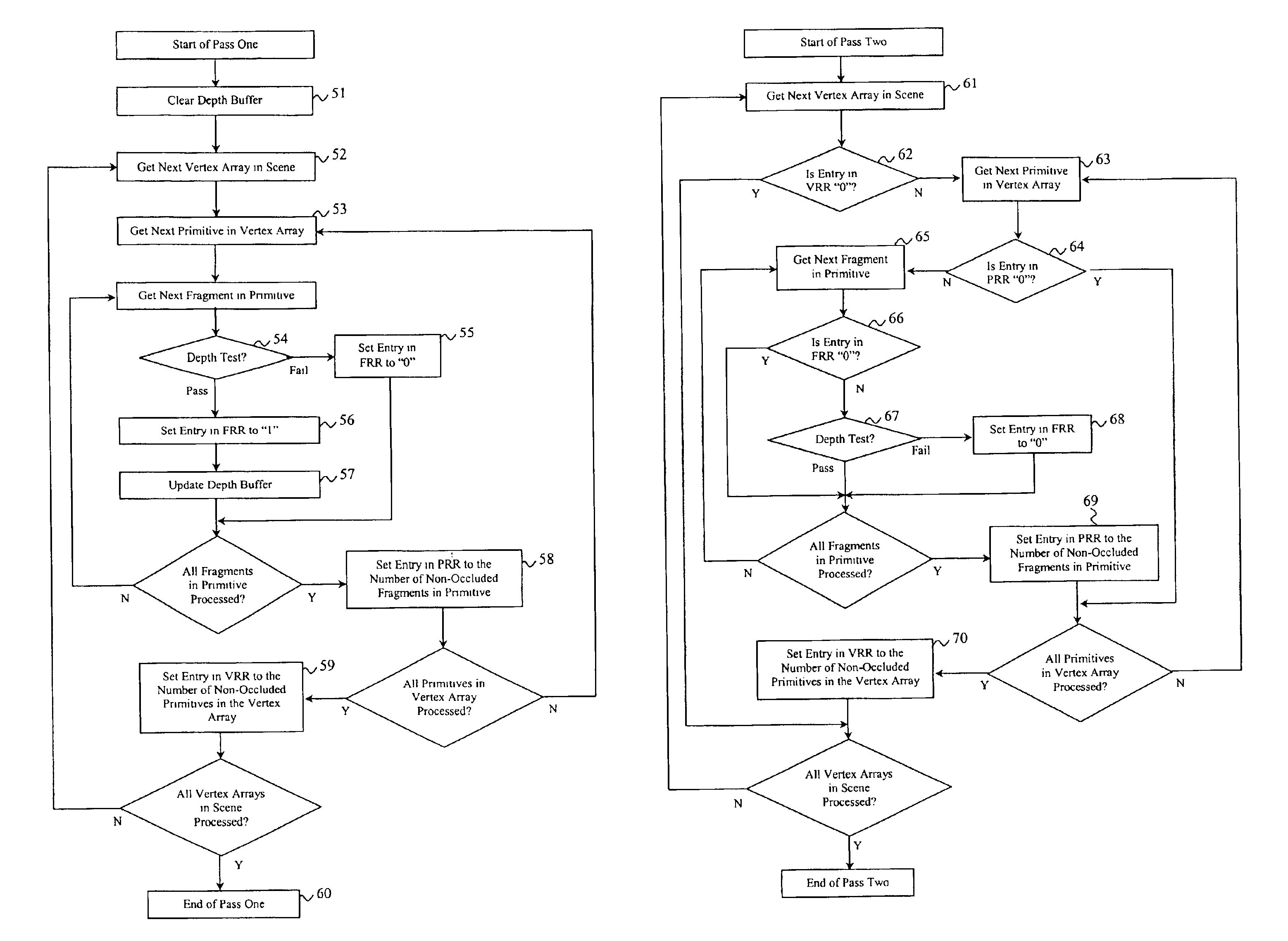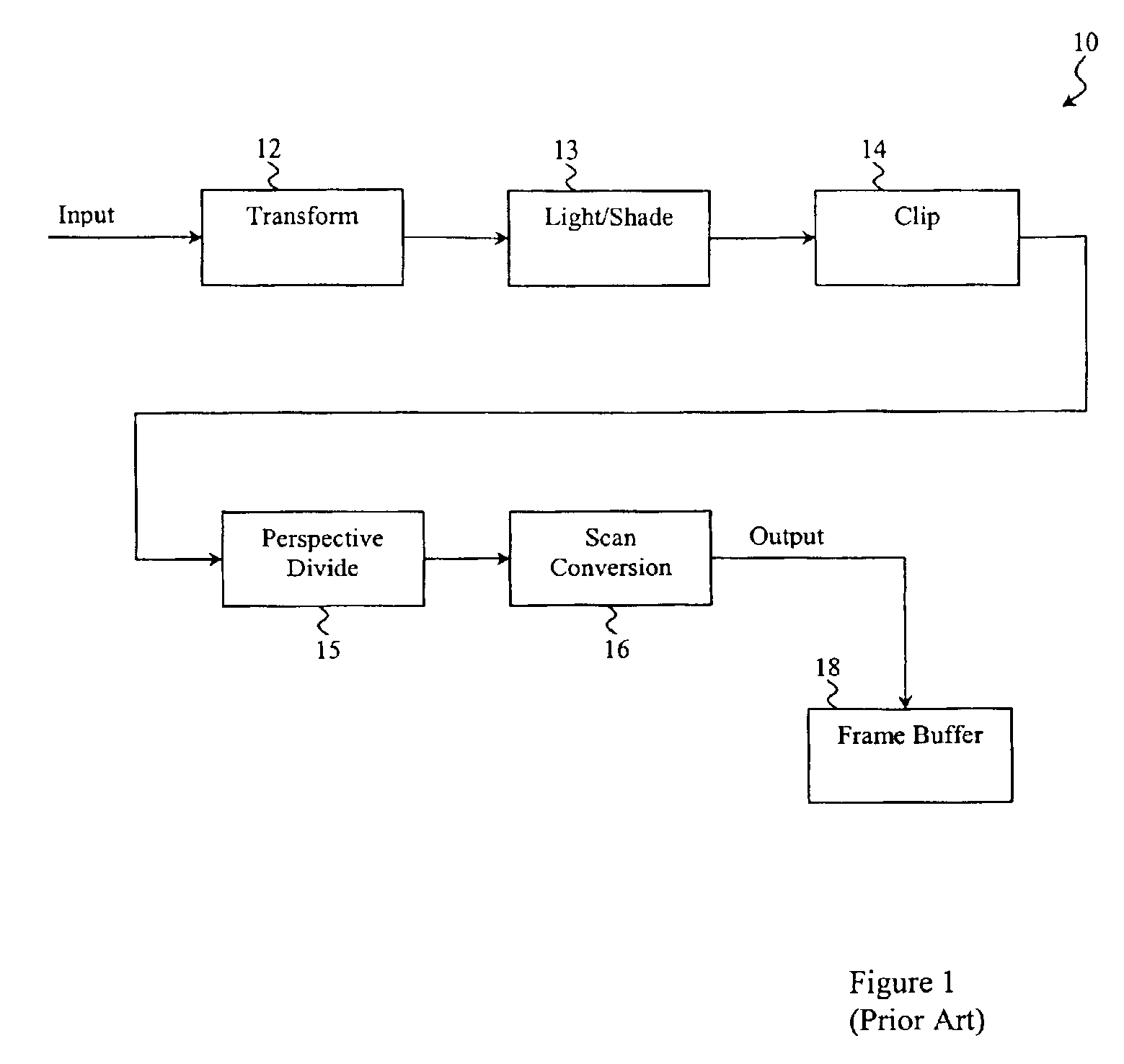Method and apparatus for accelerating occlusion culling in a graphics computer
a graphics computer and occlusion culling technology, applied in the field of graphical data processing, can solve the problems of wasting processing time, affecting the processing efficiency of the graphics processing system, and a large amount of processing time spent on rendering all the fragments, so as to achieve the effect of stopping the processing of the fragments
- Summary
- Abstract
- Description
- Claims
- Application Information
AI Technical Summary
Benefits of technology
Problems solved by technology
Method used
Image
Examples
Embodiment Construction
[0014]The present invention may be executed in a variety of data processing systems under a number of different operating systems. The data processing system may be, for example, a personal computer, a mid-range computer, a mainframe computer, or a console gaming system. In addition, the data processing system may be a stand-alone system or part of a network such as a local-area network (LAN) or a wide-area network (WAN).
[0015]Referring now to the drawings and in particular to FIG. 1, there is depicted a block diagram of a graphics pipeline 10, according to the prior art. As shown, graphics pipeline 10 includes a transform unit 12, a light / shade unit 13, a clip unit 14, a perspective unit 15 and a scan conversion unit 16. Transform unit 12 converts primitive data input from a first coordinate space to a second coordinate space. Light / shade unit 13 applies lighting and shading to the transformed primitives, and may additionally provide texture mapping. Transform unit 12 and light / sha...
PUM
 Login to View More
Login to View More Abstract
Description
Claims
Application Information
 Login to View More
Login to View More - R&D
- Intellectual Property
- Life Sciences
- Materials
- Tech Scout
- Unparalleled Data Quality
- Higher Quality Content
- 60% Fewer Hallucinations
Browse by: Latest US Patents, China's latest patents, Technical Efficacy Thesaurus, Application Domain, Technology Topic, Popular Technical Reports.
© 2025 PatSnap. All rights reserved.Legal|Privacy policy|Modern Slavery Act Transparency Statement|Sitemap|About US| Contact US: help@patsnap.com



